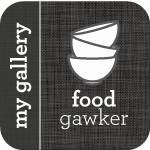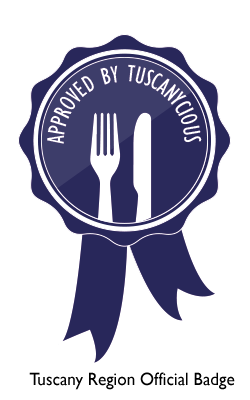
During our latest holiday in Japan, we spent a few days in Tokyo. As we had already been there in 2015, we decided to go out on a couple of day trips to nearby places. One of these places was Nikko (and the other one was Kamakura).
Nikko is a beautiful little town mostly famous for Toshogu, Japan’s most lavishly decorated shrine and the mausoleum of Tokugawa Ieyasu, the founder of the Tokugawa shogunate.
The mountains around Nikko offer scenic landscapes, lakes, waterfalls, hot springs, wild monkeys and hiking trails. Having visited the area in winter, we decided to venture outside town, but if you go in any other season you should give the area a little extra time. The area around Lake Chuzenji, in particular, is well known for its beautiful autumn colours (koyo).
I have to say that even covered in snow, Nikko is a really nice town.
We were also very lucky, as we got to see Mount Fuji from the train. It was the first time we ever spotted it and it was a total surprise for us!

SIGHTSEEING
There are many interesting sights in Nikko. We decided to visit only Toshogu Shrine, Futurajinja and Rinnoji Temple.
Getting around wasn’t very easy as the roads were icy and we had to be very careful not to slip and fall!

Toshogu Shrine
Toshogu Shrine is a spectacular complex and it is lavishly decorated. It is made up of more than a dozen buildings set in a beautiful forest. Countless wood carvings and large amounts of gold leaf were used to decorate the buildings in a way not seen anywhere in Japan, where simplicity has been traditionally stressed in shrine architecture.


Toshogu Shrine is also the place where you can find the tomb of Tokugawa Ieyasu, the founder of the Tokugawa Shogunate that ruled Japan for over 250 years until 1868.

Unfortunately, several of the shrine’s many buildings are being renovated in stages from 2007 to 2024. In the third stage, lasting from 2013 to March 2019, the centrally placed Yomeimon Gate and two less important structures are being renovated. The gate is covered by scaffolding, but the shrine with its wealth of buildings and carvings is still worth a visit.

Among the many buildings, particularly notable ones include a beautiful five story pagoda in front of the main entrance gate.

Upon entering the shrine, you will first come across a group of ostentatiously built storehouses. Of the many colourful and elaborate wood carvings that decorate them, the most famous ones are those of the “see no evil, speak no evil and hear no evil” monkeys and the Sozonozo Elephants (“imagined elephants”) that were carved by an artist who had never seen elephants!!

Then you see the famous Yomeimon Gate which is currently covered up by scaffolding. It is supposed to be Japan’s most ornate structure, but we could not see it.

To the left of Yomeimon Gate, you will find the Honjido Hall which features the “Crying Dragon“. This is a large painting of a dragon on the ceiling of the hall, which is thus named because a roar sound can be heard when two pieces of wood are clapped directly under its head due to the acoustics of the hall. A priest did this for us and it was really interesting. The kids loved the experience!

Beyond Yomeimon is the main shrine building and to its right is the Sakashitamon Gate, with the famous carving of the Nemurineko (sleeping cat).
Sakashitamon marks the start of a looooong flight of stairs that leads uphill through the woods to Tokugawa Ieyasu’s mausoleum.

It’s only a 10 minute walk, but trust me… it is tiring!
Rinnoji Temple
Rinnoji is Nikko’s most important temple.
The temple’s main building, the Sanbutsudo, houses large, gold lacquered, wooden statues of Amida, Senju-Kannon and Bato-Kannon.
Unfortunately, Sanbutsudo Hall is undergoing major renovation works, which are scheduled to last until March 2019.

See the huge scaffolding?
The temple remains open to tourists, but we decided not to enter.
Futurasan Shrine
Futarasan Shrine is right next to Toshogu Shrine.

It is dedicated to the deities of Nikko’s three most sacred mountains: Mount Nantai, Mount Nyoho and Mount Taro.

The shrine grounds are mostly free to enter except for a small paid area.

Located one kilometer from the shrine grounds, the Shinkyo Bridge also belongs to Futarasan Shrine.
Shinkyo Bridge
The Shinkyo Bridge stands at the entrance to Nikko’s shrines and temples, and technically belongs to Futarasan Shrine. The bridge is ranked as one of Japan’s three finest bridges and it makes for a pretty photo stop. Especially when covered in snow!


Food
After visiting the temples, we had lunch at an amazing place we ran into by chance: Hippari – Dako.

It’s not far from the Shinkyo Bridge bus stop (on the side of the road of the bridge and a few metres towards the station) and it’s got a red front shop/door.
It doesn’t look like much from the outside, but we were blown away by the food and the ambience. There are only a few tables (about 5) and the walls are completely covered with notes left from travellers from around the world. Needless to say that we left one too!

The ladies who work there don’t speak much English, but they are very nice and there is an English menu. Not only, at the end of our meal, they gave our kids some origami, which I thought was a very nice touch!
We had… some warm sake – it was freezing cold outside!

Japanese Curry with rice and pickles, which was just yum!

Gyoza.

Chicken Yakitori.

And the BEST Tsukune we have ever eaten!!!

The price was quite reasonable too. I would highly recommend stopping here for lunch!
RESOURCES ON MSM
RECIPES:
TRAVEL IN JAPAN:
Nara & Fushimi Inari guide – Japan
Haru Cooking Class Kyoto – Japan Guide

HOW TO GET TO NIKKO FROM TOKYO
Nikko is connected with Tokyo by Tobu Railways and Japan Railways (JR).
Tobu Railways from Asakusa Station
The Tobu terminal station in Tokyo for trains to Nikko is Tobu Asakusa Station, which can be accessed by subway (Ginza and Asakusa Subway Lines). It was a 5 minute walk from our hotel, so needless to say we chose this option!

There are hourly rapid trains between Asakusa and Nikko, which take about two hours. There are also a few limited express trains (all seats reserved), called “Kegon”, which only take 105 minutes, but are twice as expensive as the rapid trains.
Tobu is offering various free passes, which include the round trip from Tokyo to Nikko and unlimited use of buses in the Nikko area. The Japan Rail Pass and other JR passes are not valid on these Tobu trains.
Limited express from Shinjuku Station
Direct limited express trains, cooperated by Japan Railways (JR) and Tobu Railways, connect JR Shinjuku Station with Tobu Nikko Station. The one way journey takes two hours. All seats are reserved.
Because the trains between Shinjuku and Nikko partially use the tracks of Tobu Railways, the Japan Rail Pass does not fully cover the expenses of the journey.

Japan Railways (JR)
Take the JR Tohoku Shinkansen (from Tokyo or Ueno Station) to Utsunomiya Station and transfer to the JR Nikko Line. With a good connection at Utsunomiya, the one way trip takes about 100 minutes. Due to its high cost, this option is good for holders of a JR pass only.
Once in Nikko, take a bus to the temple area right in front of the station.


















Leave a Reply